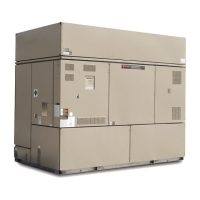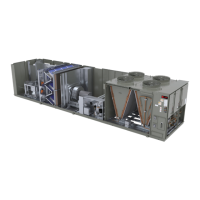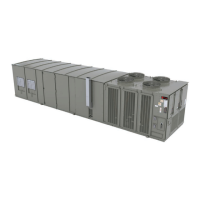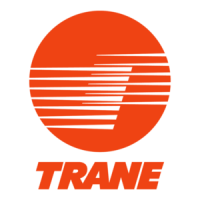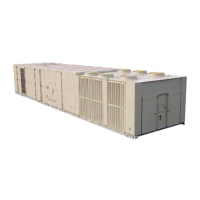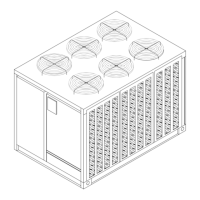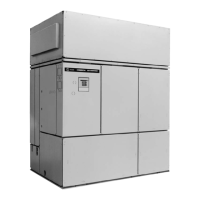42
RT-SVX063E-EN
Following the guidelines listed below will enhance both
the installation and operation of the furnace.
NNoottee:: In the absence of local codes, the installation
must conform with the American National
Standard Z223-1a of the National Fuel Gas Code,
(latest edition).
1. To assure sufficient gas pressure at the unit, use , p.
43 as a guide to determine the appropriate gas pipe
size for the unit heating capacity listed on the unit
nameplate.
NNoottee:: Supply line size should not be sized smaller
than the factory piping connection elbow size.
2. If a gas line already exists, verify that it is sized
large enough to handle the additional furnace
capacity before connecting to it.
3. Take all branch piping from any main gas line from
the top at 90 degrees or at 45 degrees to prevent
moisture from being drawn in with the gas.
4. Ensure that all piping connections are adequately
coated with joint sealant and properly tightened.
Use a piping compound that is resistant to liquid
petroleum gases.
5. Provide a drip leg near the unit.
6. Install a pressure regulator at the unit that is
adequate to maintain 7" w.c. for natural gas (or 11"
w.c. for propane) while the furnace is operating at
full capacity.
IImmppoorrttaanntt:: Gas pressure in excess of 14" w.c. or 0.5
psig will damage the gas train.
NNOOTTIICCEE
GGaass VVaallvvee DDaammaaggee!!
FFaaiilluurree ttoo ffoollllooww iinnssttrruuccttiioonnss bbeellooww ccoouulldd rreessuulltt iinn
ggaass vvaallvvee ddaammaaggee ffrroomm iinnccoorrrreecctt ggaass pprreessssuurreess,,
iirrrreegguullaarr ppuullssaattiinngg ffllaammee ppaatttteerrnnss,, bbuurrnneerr rruummbbllee,,
aanndd ppootteennttiiaall ffllaammee oouuttaaggeess..
UUssee aa pprreessssuurree rreegguullaattoorr ttoo pprrooppeerrllyy rreegguullaattee ggaass
pprreessssuurree.. DDOO NNOOTT oovveerrssiizzee tthhee rreegguullaattoorr..
Failure to use a pressure regulating device will
result in incorrect gas pressure, which can cause
erratic operation due to gas pressure fluctuations as
well as damage the gas valve. Oversizing the
regulator will cause irregular pulsating flame
patterns, burner rumble, potential flame outages,
and possible gas valve damage.
If a single pressure regulator serves more than one
rooftop unit, it must be sized to ensure that the inlet
gas pressure does not fall below 7" w.c. for natural
gas (10" w.c. for propane) with all the furnaces
operating at full capacity. The gas pressure must
not exceed 14" w.c. when the furnaces are off.
7. Provide adequate support for all field installed gas
piping to avoid stressing the gas train and controls.
WWAARRNNIINNGG
EExxpplloossiioonn HHaazzaarrdd!!
FFaaiilluurree ttoo ffoollllooww ssaaffee lleeaakk tteesstt pprroocceedduurreess bbeellooww
ccoouulldd rreessuulltt iinn ddeeaatthh oorr sseerriioouuss iinnjjuurryy oorr
eeqquuiippmmeenntt oorr pprrooppeerrttyy--oonnllyy--ddaammaaggee..
NNeevveerr uussee aann ooppeenn ffllaammee ttoo ddeetteecctt ggaass lleeaakkss.. UUssee aa
lleeaakk tteesstt ssoolluuttiioonn ffoorr lleeaakk tteessttiinngg..
8. Leak test the gas supply line using a soap-and-
water solution or equivalent before connecting it to
the gas train.
9. Check the supply pressure before connecting it to
the unit to prevent possible gas valve damage and
the unsafe operating conditions that will result.
NNoottee:: Do not rely on the gas train shutoff valves to
isolate the unit while conducting gas
pressure/leak test. These valves are not
designed to withstand pressures in excess of
14" w.c. or 0.5 psig.
IInnssttaallllaattiioonn
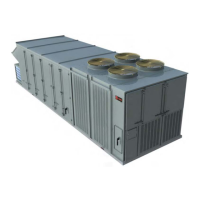
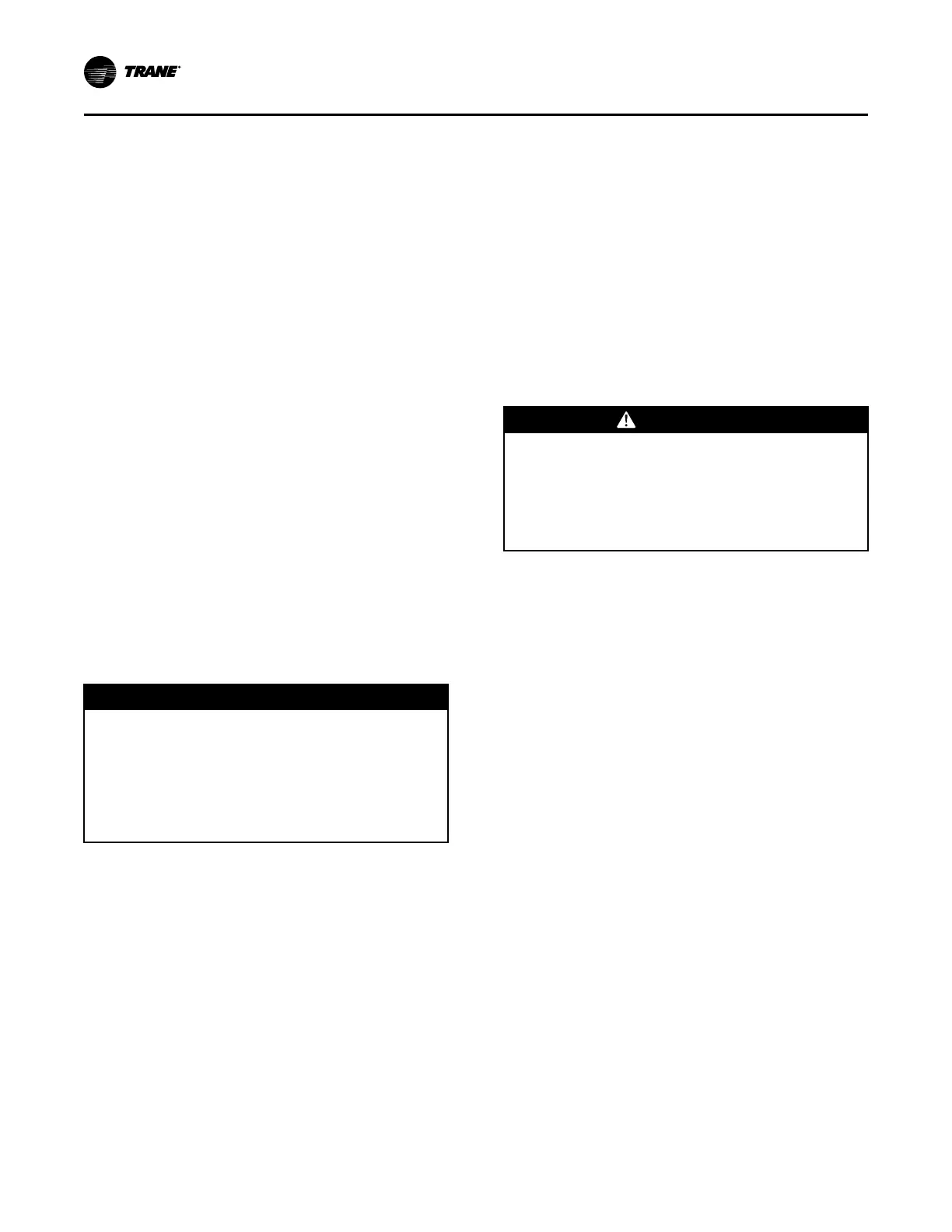